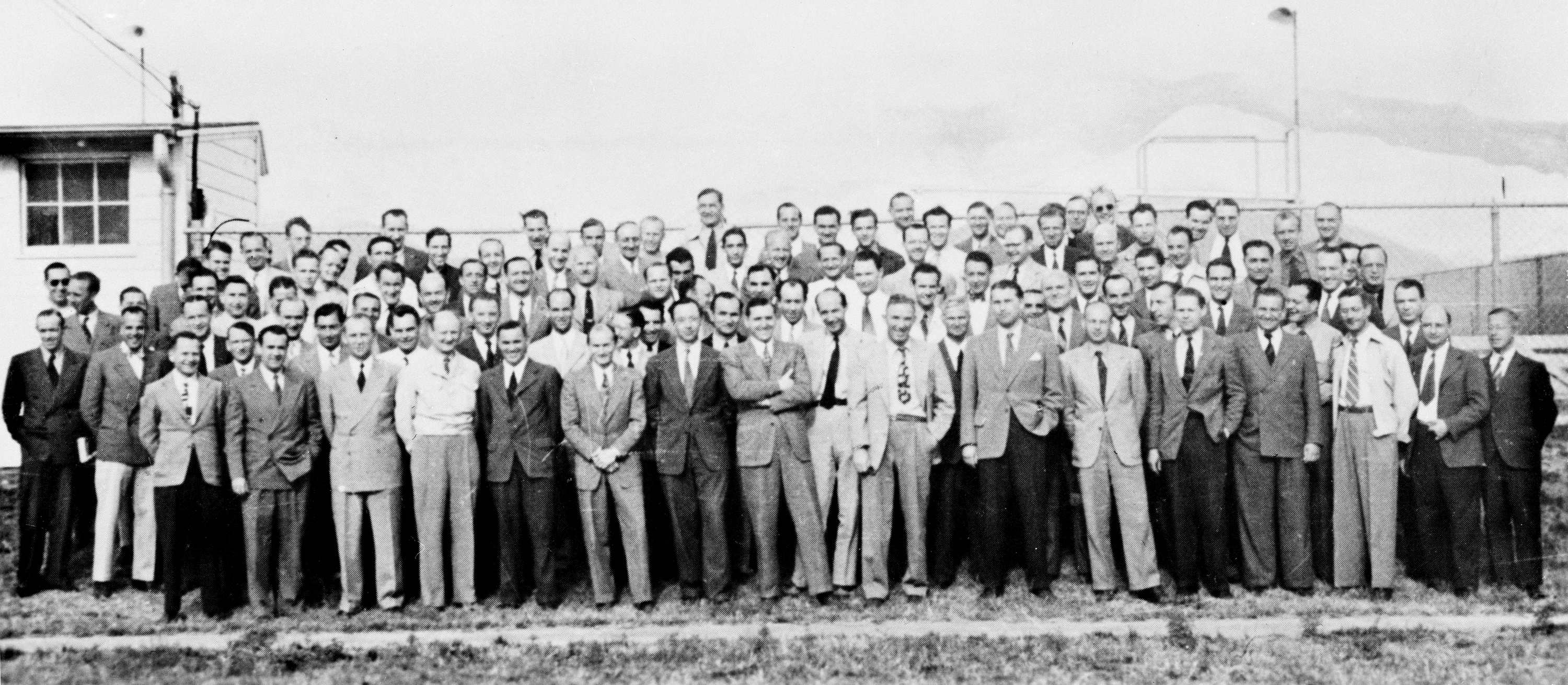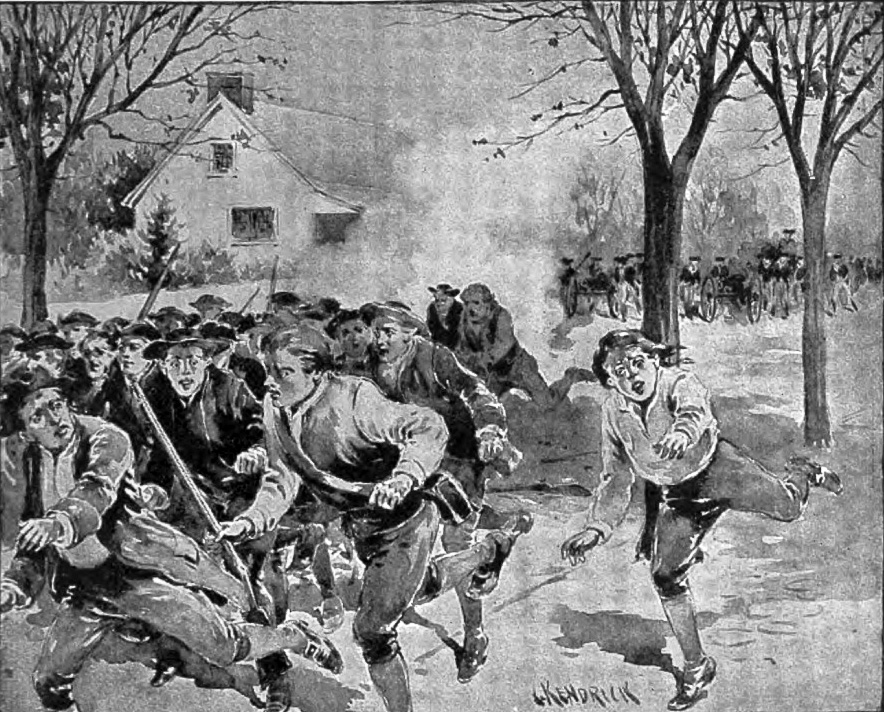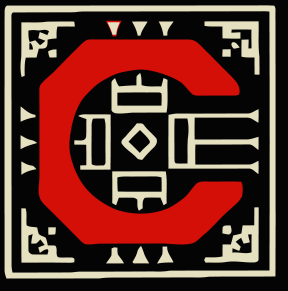|
United States Army Ordnance Department
The United States Army Ordnance Corps, formerly the United States Army Ordnance Department, is a sustainment branch of the United States Army, headquartered at Fort Lee, Virginia. The broad mission of the Ordnance Corps is to supply Army combat units with weapons and ammunition, including at times their procurement and maintenance. Along with the Quartermaster Corps and Transportation Corps, it forms a critical component of the U.S. Army logistics system. The U.S. Army Ordnance Corps mission is to support the development, production, acquisition, and sustainment of weapon systems, ammunition, missiles, electronics, and ground mobility materiel during peace and war to provide combat power to the U.S. Army. The officer in charge of the branch for doctrine, training, and professional development purposes is the Chief of Ordnance. The current Chief of Ordnance is Brigadier General Michael B. Lalor. History Colonial period to War of Independence During the colonial era in Amer ... [...More Info...] [...Related Items...] OR: [Wikipedia] [Google] [Baidu] |
United States Of America
The United States of America (U.S.A. or USA), commonly known as the United States (U.S. or US) or America, is a country primarily located in North America. It consists of 50 states, a federal district, five major unincorporated territories, nine Minor Outlying Islands, and 326 Indian reservations. The United States is also in free association with three Pacific Island sovereign states: the Federated States of Micronesia, the Marshall Islands, and the Republic of Palau. It is the world's third-largest country by both land and total area. It shares land borders with Canada to its north and with Mexico to its south and has maritime borders with the Bahamas, Cuba, Russia, and other nations. With a population of over 333 million, it is the most populous country in the Americas and the third most populous in the world. The national capital of the United States is Washington, D.C. and its most populous city and principal financial center is New York City. ... [...More Info...] [...Related Items...] OR: [Wikipedia] [Google] [Baidu] |
Henry Knox
Henry Knox (July 25, 1750 – October 25, 1806), a Founding Father of the United States, was a senior general of the Continental Army during the Revolutionary War, serving as chief of artillery in most of Washington's campaigns. Following the revolution, he oversaw the War Department under the Articles of Confederation, 1785—1789. Washington, at the start of his first administration, appointed Knox the nation's first Secretary of War, a position he held from 1789—1794. He is perhaps best remembered today as the namesake of Fort Knox in Kentucky, the repository of a large portion of the nation's gold reserves. Born and raised in Boston, Massachusetts, Knox owned and operated a bookstore there, cultivating an interest in military history and joining a local artillery company. Knox was also on the scene of the 1770 Boston Massacre. Though barely 25 when the American Revolutionary War broke out in 1775, he engineered the transport of captured artillery from New York's ... [...More Info...] [...Related Items...] OR: [Wikipedia] [Google] [Baidu] |
War Of 1812
The War of 1812 (18 June 1812 – 17 February 1815) was fought by the United States of America and its indigenous allies against the United Kingdom and its allies in British North America, with limited participation by Spain in Florida. It began when the United States declared war on 18 June 1812 and, although peace terms were agreed upon in the December 1814 Treaty of Ghent, did not officially end until the peace treaty was ratified by Congress on 17 February 1815. Tensions originated in long-standing differences over territorial expansion in North America and British support for Native American tribes who opposed US colonial settlement in the Northwest Territory. These escalated in 1807 after the Royal Navy began enforcing tighter restrictions on American trade with France and press-ganged men they claimed as British subjects, even those with American citizenship certificates. Opinion in the US was split on how to respond, and although majorities in both the House and ... [...More Info...] [...Related Items...] OR: [Wikipedia] [Google] [Baidu] |
American System Of Manufacturing
The American system of manufacturing was a set of manufacturing methods that evolved in the 19th century. The two notable features were the extensive use of interchangeable parts and mechanization for production, which resulted in more efficient use of labor compared to hand methods. The system was also known as armory practice because it was first fully developed in armories, namely, the United States Armories at Springfield in Massachusetts and Harpers Ferry in Virginia (later West Virginia), inside contractors to supply the United States Armed Forces, and various private armories. The name "American system" came not from any aspect of the system that is unique to the American national character, but simply from the fact that for a time in the 19th century it was strongly associated with the American companies who first successfully implemented it, and how their methods contrasted (at that time) with those of British and continental European companies. In the 1850s, the " ... [...More Info...] [...Related Items...] OR: [Wikipedia] [Google] [Baidu] |
Eli Whitney
Eli Whitney Jr. (December 8, 1765January 8, 1825) was an American inventor, widely known for inventing the cotton gin, one of the key inventions of the Industrial Revolution that shaped the economy of the Antebellum South. Although Whitney himself believed that his invention would reduce the need for enslaved labor and help hasten the end of southern slavery, Whitney's invention made upland short cotton into a profitable crop, which strengthened the economic foundation of slavery in the United States and prolonged the institution. Despite the social and economic impact of his invention, Whitney lost many profits in legal battles over patent infringement for the cotton gin. Thereafter, he turned his attention into securing contracts with the government in the manufacture of muskets for the newly formed United States Army. He continued making arms and inventing until his death in 1825. Early life and education Whitney was born in Westborough, Massachusetts, on December 8, 1765, ... [...More Info...] [...Related Items...] OR: [Wikipedia] [Google] [Baidu] |
John H
John is a common English name and surname: * John (given name) * John (surname) John may also refer to: New Testament Works * Gospel of John, a title often shortened to John * First Epistle of John, often shortened to 1 John * Second Epistle of John, often shortened to 2 John * Third Epistle of John, often shortened to 3 John People * John the Baptist (died c. AD 30), regarded as a prophet and the forerunner of Jesus Christ * John the Apostle (lived c. AD 30), one of the twelve apostles of Jesus * John the Evangelist, assigned author of the Fourth Gospel, once identified with the Apostle * John of Patmos, also known as John the Divine or John the Revelator, the author of the Book of Revelation, once identified with the Apostle * John the Presbyter, a figure either identified with or distinguished from the Apostle, the Evangelist and John of Patmos Other people with the given name Religious figures * John, father of Andrew the Apostle and Saint Peter ... [...More Info...] [...Related Items...] OR: [Wikipedia] [Google] [Baidu] |
Simeon North
Simeon North (July 13, 1765 – August 25, 1852) was a Middletown, Connecticut, gun manufacturer, who developed one of America's first milling machines (possibly the very first) in 1818 and played an important role in the development of interchangeable parts manufacturing. North was born in Berlin, Connecticut, into a prosperous family able to provide all six sons with farms of their own. North was given a farm in Berlin, a gift that enabled him to marry Lucy Savage when he was only twenty-one years old; the couple had five sons and three daughters. In 1795 the Norths purchased a sawmill located on the brook that ran beside their land. Simeon hired a man to help run it, enlarged the building to house a forge and trip-hammer, and began manufacturing scythes from imported steel. Four years later, he obtained a contract to make pistols and began to add a factory to the mill building. North's brother-in-law Elisha Cheney was a skilled clockmaker, a trade he had learned from his f ... [...More Info...] [...Related Items...] OR: [Wikipedia] [Google] [Baidu] |
Thomas Blanchard (inventor)
Thomas Blanchard (June 24, 1788 – April 16, 1864) was an American inventor who lived much of his life in Springfield, Massachusetts, where in 1819, he pioneered the assembly line style of mass production in America, and also invented the first machining lathe for interchangeable parts. Blanchard worked, for much of his career, with the Springfield Armory. In 1825, Blanchard also invented America's first car, which he called a "horseless carriage," powered by steam. During Blanchard's lifetime, he was awarded over twenty-five patents for his creations.. Biography Tacks He was born in Sutton, Massachusetts. He had a fondness for mechanical employment, and was associated with his brother in the manufacture of tacks by hand. This process was exceedingly slow and tedious,. and his first machine, made and patented in 1806, was a mechanical tack-maker, which could fabricate five hundred tacks per minute, each much better than tacks made by hand. He sold the rights to his machine for $ ... [...More Info...] [...Related Items...] OR: [Wikipedia] [Google] [Baidu] |
Interchangeable Parts
Interchangeable parts are parts (components) that are identical for practical purposes. They are made to specifications that ensure that they are so nearly identical that they will fit into any assembly of the same type. One such part can freely replace another, without any custom fitting, such as filing. This interchangeability allows easy assembly of new devices, and easier repair of existing devices, while minimizing both the time and skill required of the person doing the assembly or repair. The concept of interchangeability was crucial to the introduction of the assembly line at the beginning of the 20th century, and has become an important element of some modern manufacturing but is missing from other important industries. Interchangeability of parts was achieved by combining a number of innovations and improvements in machining operations and the invention of several machine tools, such as the slide rest lathe, screw-cutting lathe, turret lathe, milling machine and m ... [...More Info...] [...Related Items...] OR: [Wikipedia] [Google] [Baidu] |
Harpers Ferry Armory
The Harpers Ferry Armory, more formally known as the United States Armory and Arsenal at Harpers Ferry, was the second federal armory created by the United States government. (The first was the Springfield Armory.) It was located in Harpers Ferry, Virginia (since 1863, West Virginia). It was both an arsenal, manufacturing firearms, and an armory, a storehouse for firearms. Along with the Springfield Armory, it was instrumental in the development of machining techniques to make interchangeable parts of precisely the same dimensions. The Armory was a long, narrow complex of buildings, located alongside the Baltimore & Ohio Railroad line on a strip of land alongside the Potomac River. The entrance was close to the center of town, with its train station and hotels, and the bridge, the B & O Railroad Potomac River Crossing. At its peak, just before the Civil War, the Armory had 400 employees. During the Civil War, the Armory was destroyed and its equipment removed; it was not rebuilt. ... [...More Info...] [...Related Items...] OR: [Wikipedia] [Google] [Baidu] |
Springfield Armory
The Springfield Armory, more formally known as the United States Armory and Arsenal at Springfield located in the city of Springfield, Massachusetts, was the primary center for the manufacture of United States military firearms from 1777 until its closing in 1968. It was the first federal armory and one of the first factories in the United States dedicated to the manufacture of weapons. The site is preserved as the Springfield Armory National Historic Site, Western Massachusetts' only unit of the National Park Service, national park system. It features the world's largest collection of historic American firearms. Famous first as the United States' primary arsenal during the American Revolutionary War, and then as the scene of a confrontation during Shays' Rebellion, the Springfield Armory in the 19th and 20th centuries became the site of numerous technological innovations of global importance, including interchangeable parts, the assembly line style of mass production, and moder ... [...More Info...] [...Related Items...] OR: [Wikipedia] [Google] [Baidu] |
Carlisle Barracks
Carlisle Barracks is a United States Army facility located in Carlisle, Pennsylvania. The site of the U.S. Army War College, it is the nation's second-oldest active military base. The first structures were built in 1757, during the French and Indian War between Great Britain and France in the colonies. From 1879 to 1918, the property was transferred to the Department of Interior to operate the Carlisle Indian Industrial School. This was the first off-reservation boarding school established to educate and assimilate Native American children into European-American culture. In 1891 Congress passed legislation to expand this program. After the United States entered World War I, the school was closed and the property was transferred back to the War Department. 1756—1860 Developed at the intersection of Indian trails along Letort Creek, in the eighteenth century the town of Carlisle became the jumping-off point for traders and settlers heading over the Alleghenies on their way we ... [...More Info...] [...Related Items...] OR: [Wikipedia] [Google] [Baidu] |





